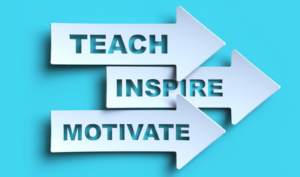
Network-Driven Culture Transformation: How Connectivity Fuels Organizational Change
Organizational culture is often seen as an abstract concept. However, I have found that network science offers a powerful lens to better understand and shape

Organizational culture is often seen as an abstract concept. However, I have found that network science offers a powerful lens to better understand and shape

In the ever-evolving job market, hiring managers and recruiters are on the lookout for standout skills that set candidates apart. From highlighting proactivity and agility

In today’s uncertain business and economic environment, employee mental health challenges are on the rise. In response, workforce planning is emerging as a crucial strategy

Productivity metrics were essential 100 years ago, during the manufacturing age. At that time, organizations measured success with metrics like hours worked, revenue per employee,

As organizations enter a new era, we’re seeing a clear shift in management methods and practices. Traditional command-and-control styles are giving way to a more

There’s nothing like having skin in the game to keep you focused, motivated, and engaged. Just ask any business owner. This logic extends to employees,

Driven by an ever-growing desire for personalized, convenient, seamlessly integrated experiences, customer expectations continue to evolve at breakneck speed. To meet these expectations, organizations must

People often assume happy employees are also engaged. But is that really a safe bet? Sometimes with the best intentions to improve happiness in the

With so many interesting new HR tools available lately, are you wondering if more modern HR analytics could improve your workforce planning capabilities? In a

You’re a business leader. You believe in your company with all your heart. Your commitment to the organization’s mission drives you to aim high, work

A fine mechanical watch is exquisite in its own right. But if you look closer, you’ll see more than just a special timepiece. It is

Faced with increasingly turbulent economic times, businesses are rapidly learning the importance of strong leadership. The world has had enough problems dealing with the Covid-19

For most of the last three years, millions of people clocked in at work from the comfort of home. Now, eager to return to a

Cognitive decline is a tricky subject. It can be caused by a variety of factors – from natural aging to hypothyroidism to Alzheimer’s disease. Sometimes,

Three years ago, the pandemic lockdown triggered a wave of relentless workplace change. Over time, we’ve all had to revamp our attitudes, expectations and behaviors

One workplace buzzword many people are eager to leave behind is “quiet quitting.” The phrase dominated headlines this year, especially when a Gallup poll revealed

As 2022 draws to a close, most organizations are deeply involved in planning, budgeting and forecasting for the coming year. To complete this rigorous process,

Many managers and HR practitioners are familiar with 360 feedback as a leadership development practice. However, no two 360 feedback experiences look alike. That is

The current talent market poses numerous challenges for leaders and employees, alike. Perhaps the most disruptive force redefining the post-pandemic business landscape is persistently high

When someone says it’s time for performance evaluations, what happens? You can almost hear a collective groan ripple across an organization. Reactions run the gamut,

Are you looking for proven ways to drive employee engagement? Many organizations find that collaboration is a highly effective strategy. For instance, consider these 10

If you’re ramping up for Q4 in your workplace, you may be anticipating a slew of quarterly performance reviews. It’s your manager’s last chance of

Always treat your employees exactly as you want them to treat your best customers. – Stephen R. Covey The classic “my-way-or-the-highway” leadership style is no